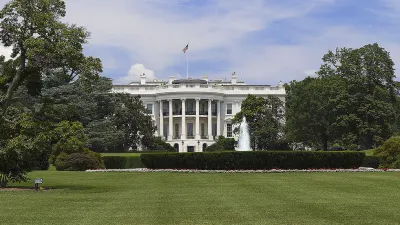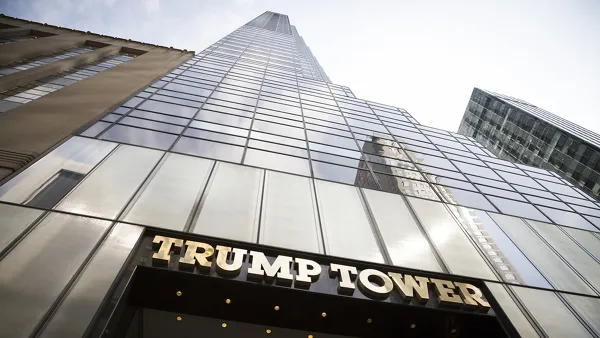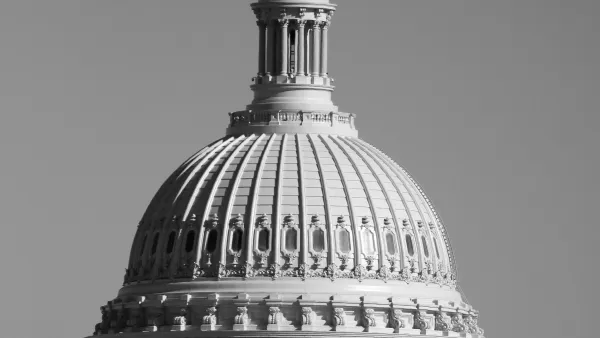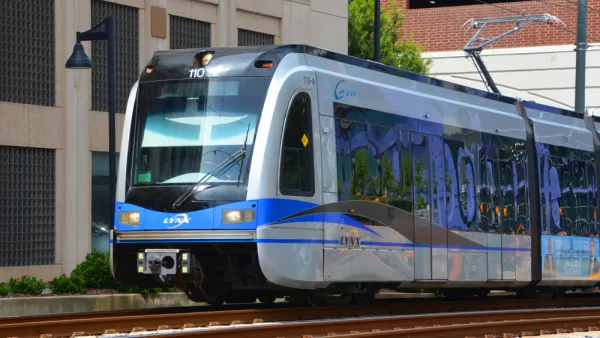The conventional progressive wisdom is that the Trump Administration will be bad for cities and for transit users. But in recent decades, a unified Republican government has been better for public transit than a divided government.

The conventional wisdom among progressives seems to be that the incoming Trump Administration will be bad for cities generally and for public transit in particular, based on President-elect Trump's generally hostile attitude toward environmentalist policies.
Although I do not expect this Administration to be a hotbed of smart growth innovation, I don't expect it to be anti-transit either. To understand why, let's go back to the first time in recent memory that a Democratic president met a Republican Congress.
In 1994, the Republicans took over the House and Senate. At first, the Republicans were quite aggressive in cutting federal domestic spending (including transit spending). From 1995 to 2000, government spending decreased from 20 percent of gross national product (GNP) to 17.6 percent. This pattern of austerity affected federal transit spending; such spending held steady between 1995 and 1999 (decreasing from $4.48 million to $4.36 billion) which means that spending was reduced by a little over 10 percent in real terms. Moreover, federal spending was redistributed from operations to capital spending, which means that support for day-to-day transit operations was slashed from $2 billion to $0.9 billion during this period. In 2000 and 2001, transit spending began to increase again, perhaps because after being on Capitol Hill for a few years, Republicans shed their Gingrich-era revolutionary zeal.
In 2001, President Bush was elected. So one might think that a Republican Congress and a Republican president would create even more austerity. Right? Wrong. Overall government spending surged to 20 percent of GNP in 2008. Transportation spending joined the party; federal support for public transit increased from $7.3 billion to $10 billion (roughly a 15 percent increase after inflation). Although much of this increase went to capital spending, even operations spending increased to $2.9 billion.
Why would unified Republican government spend more than divided government? My guess is that during the 1990s, Republican legislators were under pressure from primary voters to distinguish themselves from a Democratic president. But once Republicans held both ends of Pennsylvania Avenue, they could prove they were "real Republicans" merely by voting with the President. So Republicans lost their political incentive to favor budgetary austerity.
In 2011, Tea Party Republicans took over the House, and once again a Democratic president faced a Republican Congress. Again, the Republicans held the line on government spending; outlays decreased from 23.4 percent of GNP in 2010 and 2011 to 20.7 percent in 2015. Transit spending decreased slightly for a few years, from $13.1 billion in 2010 to $12.5 billion in 2014.
Soon, we will again have a Republican president and a Republican Congress. My guess is that as under the Bush Administration, government will grow—including some of the parts of government that transit advocates like. On the other hand, I predict a very challenging four years for those of you who value lean government and balanced budgets.
Progressives note that the Republican platform is anti-transit. However, the Republican platform was generated by a few activists who were motivated enough to join the platform committee. There is no reason to believe that their views mirrored those of the Trump campaign, though presumably they tried to accommodate Trump's positions on a few signature issues such as immigration. As former House Speaker John Boehner once noted, "have you ever met anybody who read the party platform? I never met anybody."
All of this is subject to one major qualification. Recessions tend to be terrible for public transit; less economic growth means less tax revenue for local governments, which in turn often means cuts in bus service. So if the incoming Administration mismanages the economy, that would be very bad for transit indeed.

Analysis: Cybertruck Fatality Rate Far Exceeds That of Ford Pinto
The Tesla Cybertruck was recalled seven times last year.

National Parks Layoffs Will Cause Communities to Lose Billions
Thousands of essential park workers were laid off this week, just before the busy spring break season.

Retro-silient?: America’s First “Eco-burb,” The Woodlands Turns 50
A master-planned community north of Houston offers lessons on green infrastructure and resilient design, but falls short of its founder’s lofty affordability and walkability goals.

Test News Post 1
This is a summary

Analysis: Cybertruck Fatality Rate Far Exceeds That of Ford Pinto
The Tesla Cybertruck was recalled seven times last year.

Test News Headline 46
Test for the image on the front page.
Urban Design for Planners 1: Software Tools
This six-course series explores essential urban design concepts using open source software and equips planners with the tools they need to participate fully in the urban design process.
Planning for Universal Design
Learn the tools for implementing Universal Design in planning regulations.
EMC Planning Group, Inc.
Planetizen
Planetizen
Mpact (formerly Rail~Volution)
Great Falls Development Authority, Inc.
HUDs Office of Policy Development and Research
NYU Wagner Graduate School of Public Service





























